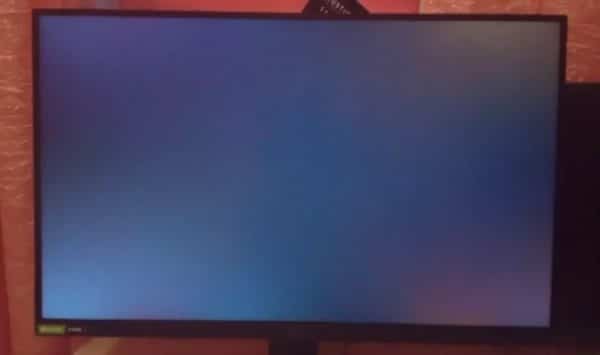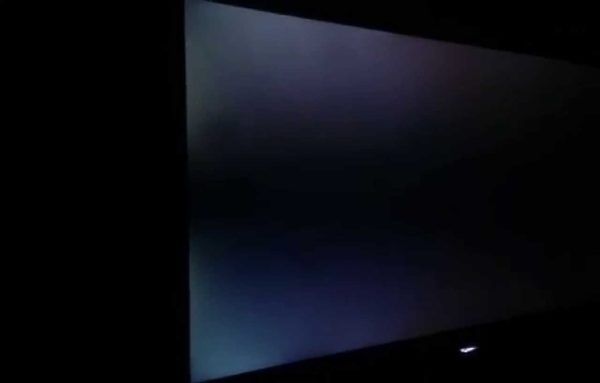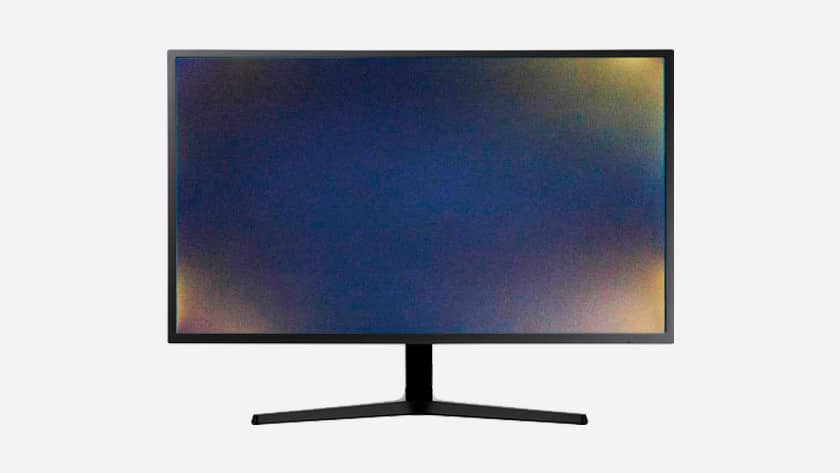Your laptop, desktop, or TV display, if it is LCD or LED, uses a backlight to create an image through a liquid crystal display panel. It may be seen as a minor occurrence, as some users may not bother about it for some time. However, it becomes something of greater concern when it gets worse, as the bleeding may be an embarrassing sight for visitors to the home.
What is LCD backlight bleeding?
When your desktop, laptop, or TV monitor bleeds, it makes light leak from the edges of the display. You may see bright patches of backlight appear in the corners of the screen, or it could also appear along the side or top edges – this may not be as annoying or noticeable as when it appears at the corners of the screen.
Because both LCD and LED displays use backlighting, using liquid crystals, or light-emitting diodes, this issue is getting more popular as the technology is very much in vogue today.
If you don’t want to anticipate facing this issue, there are other technologies such as OLED and MicroLED displays. These don’t use backlighting. It means that if you make use of these displays, you won’t have a backlight bleeding problem.
What makes backlight bleeding a source of concern?
Sometimes, there may not be much to think about or behold at the early stage of the bleeding. However, it could get to the stage that cloudy patches of light can appear at some corners of the screen even when the device is turned off. The user may start to wonder whether it really turned off when he switches the device off.
What is the cause of backlight bleeding?
The main reason for backlight bleeding is when the monitor, laptop screen, or TV screen layers become skewed. This causes pressure to form inside the display, and then it changes the alignment of the components that send out light. Most times, this is what directs light in the wrong direction and finally leads to backlight bleeding.
Another reason why the issue of backlight bleeding occurs is when cheap, low-quality materials accompany the LCD or LED display components. In higher-priced displays, this issue is rare, yet it doesn’t mean that it can’t occur. The better the product, the time-lapse in which it takes for backlight bleeding to occur.
How to test for backlight bleeding

There are two things you can do to test for backlight bleeding.
- Play a full-screen video.
- Show a completely black image on the screen. Make sure it is a full page.
- In each of these two cases, look around the edges of the screen for small streaks of light.
Remember that sometimes, you may see something like a blue tint on your screen. Even though it could be due to other issues such as faulty cable connection, it may well be due to defective LCD or LED backlight. But there may be no cause for alarm, as some TVs have this slight blue tint when they are actually operating normally.
How to get rid of LCD backlight bleeding
There are a few ways to explore how to solve the problem of backlight bleeding. Here are a few steps you could explore to solve the issue. Check them out below.
1. Clean the screen: Use a microfiber cloth to do this. Some experts also claim that you can get a better result if you use distilled water and vinegar. Take note that this method is effective on laptops, desktops, or TV screens or displays if done well.
Once you’re sure that you’ve done justice in cleaning the LCD or LED display properly, you need to wait for about 24 hours to dry to see good results, even if you’ve already started seeing better results. It is best to leave the device off as it dries and settles during this time. After that, you could check to see if the backlight resolves.
2. Check if your monitor is under warranty: It is the second thing you need to check because if it is, the manufacturer can make sure that the monitor is fixed and back to you monitor without asking you to pay money.
3. Turn down the brightness: This is another thing to try if your device is no longer under warranty. Adjust the display brightness to the point that if you reduce it further, you won’t be able to watch anything on the screen. Not that this step will quickly solve the issue. It just gives you a certain kind of relief that allows you to focus on what’s going on from the screen and not the backlight bleeding. The issue will no longer be pronounced.

4. Brighten room lighting: Don’t take this step as a fix. It is not, as the problem is still there. But because your room light is now brighter, it hides the backlight bleeding issue so much that you may not notice it.
5. Try to loosen the screws a bit: Sometimes, tightening the screws too much could cause LCD backlight bleeding. Loosening the screws on the back of the monitor or TV frame can help solve the issue. Once you loosen the screws a bit, slightly twist the screen.
6. Apply electrical tape around the display edges: In this case, you need to dismantle the display but be careful as you do it so that you don’t tamper unknowingly on something else that may worsen the issue.
If the purported fixes above don’t work, and the device is out of warranty, the only fix left may be to buy a new monitor or a new TV.
Can the LCD backlight bleeding issue go away on its own?
Some may wonder why the backlight bleeding that they thought would get worse got better and went away on its own after some time. One obvious reason is that pressure around the panel makes it loosen on its own with use. As that occurs, the backlight bleeding will become less noticeable. However, if the issue persists for a longer period and doesn’t go away, it may never go away.
What to do if you notice backlight bleeding
Our tolerance levels differ. You may know of friends who kept using a TV that had backlight bleeding issues for several years. The extent of the backlight bleeding issue may not be that serious, although people who experience a serious issue still continue using their monitors or TV screens. Some find that they can keep using the LCD when they dim it properly, as the issue becomes less noticeable.

